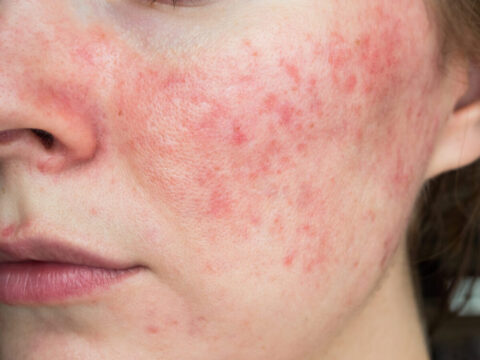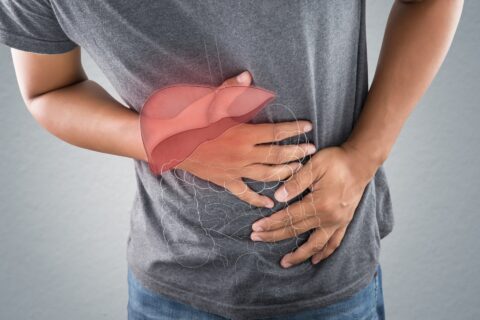Although the appearance of spider veins is harmless most of the time, some patients experience discomfort when the visible veins feel like they’re burning or itchy. Aside from ruining the skin’s flawless appearance, these spider veins also cause a nuisance if they’re accompanied by other symptoms like itchiness.
So should you be worried when the spider veins on the skin start to itch? Normally, spider veins don’t cause other symptoms like pain or itchiness. If your spider veins in the legs, face, or other parts of the body start itching, then it might be a sign of a more serious health condition that requires medical treatments.
Should You Be Concerned About Itchy Spider Veins?
According to the American Society for Dermatologic Surgery, about 40% of adult American women find spider veins in different parts of their bodies. This common venous condition isn’t usually a cause for concern, but it might be related to underlying health conditions like chronic venous insufficiency that requires immediate treatment to avoid serious complications.
Spider veins are the cluster of small veins that appear near the skin’s surface. They measure up to about 1 mm in diameter and are usually found on the legs, ankle, and face. Spider veins are usually caused by different factors like hormonal changes, sun exposure, excessive weight, pregnancy, gene, and skin injuries.
Most patients seek spider vein removal treatments to restore their flawless, vein-free skin. However, there are some cases in which spider veins are accompanied by other symptoms like itching and burning sensations that keep patients from performing their daily tasks.
When this happens, it might be a good time to consult a vein specialist for an accurate diagnosis and treatment of the venous condition.
What Causes Itchy Spider Veins?
Spider veins appear when there’s a buildup of blood in the faulty blood vessels – this condition is also known as venous insufficiency. The diseased blood vessels cause the blood to leak out through the damaged vein wall and into the skin, leading to inflammation and itchy spider veins. This condition called venous eczema or venous stasis dermatitis may happen to patients with spider veins and varicose veins.
The itchiness caused by the venous disease may become intense. However, patients must avoid scratching the area because it might result in bumps and sores on irritated skin. These complications only lead to further irritation, possible infections, and even deep vein thrombosis. Sores may also ooze fluid and scab over.
Should You Get Itchy Spider Veins Treated?
Patients need to get the right treatment for their itchy spider veins immediately because the symptoms tend to worsen over time. They might also develop other conditions that might make the affected area look and feel worse.
Itchy varicose veins and spider veins might end up causing wounds and blood clots if it irritates the skin further. The skin might begin to feel scaly and look reddish if the itchy veins are left untreated.
What to Do About Itchy Spider Veins
Since scratching the itchy spider veins isn’t recommended, patients rely on other home remedies to help them soothe the common symptom instead. Here are some helpful tips to reduce the itchiness of the leg veins:
Use Topical Creams
Topical creams that contain hydrocortisone and antihistamines calm the skin’s irritation and soothe the itchiness. Patients may also use a thick moisturizing cream, but make sure that it’s perfume-free to avoid inflaming the skin further. Like other medications, it’s important to consult with a physician or dermatologist first if the topical cream is safe to apply on the skin.
Elevate the Legs
Propping the legs higher than the heart on a pillow helps reverse the pull of gravity on the veins. This allows the pooling blood from the legs to return to the heart quickly. Make sure to do this for 15 minutes at least once per day.
Wear Compression Stockings
Compression stockings apply pressure on the legs to improve blood flow in the area. It also helps minimize swelling in the legs by allowing the blood to flow in the right direction. Non medical support hosiery is available in pharmacies even without a doctor’s prescription.
But if the doctor provides you with prescription compression stockings, make sure to follow their instructions and recommended periods of time wearing the stockings to avoid complications like skin breakage.
Read more: Can Compression Socks Get Rid of Spider Veins?
Be Physically Active
Staying active helps promote blood circulation and stops the spider veins from itching. Make sure to perform light aerobic exercises like biking and walking to strengthen the calf muscles and help pump the pooling blood in the veins. If you don’t have enough time to perform a formal workout routine, simply flexing the ankles while at work helps prevent the blood from pooling inside the damaged veins.
5 Common Treatment Options for Itchy Spider Veins
Most at-home remedies only provide temporary relief for the itchy and painful spider veins. It’s still better to consult a trusted vein specialist to get an accurate diagnosis and treatment for the venous condition. Here are some of the best non-surgical treatment options that doctors might recommend for treating itchy spider veins:
Sclerotherapy
This common spider vein and varicose vein treatment involves injecting a sclerosing agent directly to the affected vein. The sclerosant is a highly saline solution that causes the damaged veins to close. The blood then reroutes to the nearby healthy blood vessel. The closed veins eventually harden over time until it’s reabsorbed by the body.
Endovenous Laser Therapy (EVLT)
This innovative treatment is effective for improving the appearance of spider veins and varicose veins. The doctor inserts a laser fiber inside the affected vein. This allows them to directly apply heat to the vein, causing it to collapse.
VenaSeal
This non-surgical treatment utilizes a medical adhesive to close the damaged veins. The blood then flows back to the heart through other healthy veins. VenaSeal is an outpatient procedure with minimal recovery time required.
Varithena
This spider vein treatment uses an injectable foam to block the blood from entering and pooling inside the damaged veins. The blood is then redirected to healthy veins, resulting in itch relief. Varithena is also effective in reducing the appearance of smaller varicose veins.
Laser Therapy
Laser treatment for spider vein and varicose vein symptoms utilizes a device that delivers laser heat energy to the damaged veins, forcing them to close. Patients often require multiple sessions of laser therapy to completely treat spider veins and other venous conditions.
Treat the Spider Vein Problem at its Roots with Vein Center Doctor
Vein Center Doctor offers a variety of treatment options for patients near Ardsley, NY and Clifton, NJ who want to remove the visible red, blue, and purple veins on their skin. Our highly trained staff perform advanced vein removal procedures inside a state-of-the-art suite to always ensure patient safety and comfort.
Led by Dr. Rahul Sood, Vein Center Doctor specializes in cosmetic vein treatments for spider veins, varicose veins, and other issues. Call us today to know more about services or book an appointment online.







